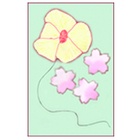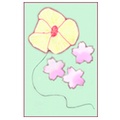The only part of Thanksgiving I look forward to is the four-day weekend. The food is ok. Typical American Thanksgiving food makes me feel unnaturally heavy. I like turkey, mashed lumpy potatoes and gravy, and canned corn, but I refuse to eat cranberry sauce, stuffing or yams. Most of my Thanksgiving dinners, fortunately, have always involved Japanese side dishes to balance off the typical American food. The only times I’ve felt unthankful at Thanksgiving were when I had dinner with family on my father’s side. They’re unorthodox Jews who butter their broccoli. I can’t stand buttered broccoli.
This year, my mother and I had dinner with family friends (originally from Japan now living in the U.S.). Thanksgiving dinner was laid out beautifully on the dinner table at their house. It was a colorful display. Shimmering silverware and large purple napkins; a sizzling golden brown Butterball turkey; enough stuffing to feed 10 people in a large green ceramic bowl; lumpy off-white mashed potatoes in a big blue bowl; steamed and healthy vegetable green-colored broccoli on a white plate; pickled Japanese cucumbers; cranberry sauce in a small cereal bowl; roasted red yams; baby greens salad with a sesame oil and ponzu dressing; potato salad Japanese-style; and steamed white rice. Condiments included Kewpie mayonnaise to accompany the broccoli; gravy for the potatoes; and soy sauce if the gravy didn’t cut it. Kewpie is a tasty mayonnaise that is versatile enough to be used as a vegetable dip, salad dressing, and a condiment for a variety of other foods.
It was a nice dinner. My mother and her friends had a conversation (in Japanese) about the current politics in Japan while their daughter and I caught up (in English) on what we’ve been doing with our lives since college. Facial and vocal expressions distinguished the two conversations despite them being simultaneous and in two languages.
For dessert, we had a fruit tart pie from Kelly’s, a Chinese bakery in Monterey Park, and hot green tea to settle our stomachs. I was glad that there wasn’t any pumpkin pie. I can tolerate it but prefer other baked good options from Chinese bakeries. All the while, I received a number of text messages on my cell phone from friends who wished me a Happy Thanksgiving. All of them said something along the lines of “Eat lots!” and “Wear elastic pants!” One of them asked if anyone else (other than her) was in a food coma.
The American tradition since the first Pilgrim and Indian dinner has become one of stuffing yourself with pounds of food, waking up late the next day, and joining a health and fitness club that holiday weekend while discount offers last. This makes me wonder what the first-ever Thanksgiving dinner was like. I can only imagine what I’ve seen in cartoons. A diverse group of people either covered in black and white garment from head to toe or wearing very little leather gathered over an assorted array of food – not just American – sharing with one another what they’re thankful for, in English no less. I have a feeling there may have not been much communication over the dinner table at the real inaugural evening. I wonder how a pilgrim asked an Indian to pass the gravy. And I wouldn’t be surprised if strange looks were given at certain dishes. It makes me wonder if the origins of “American” food bore merely from curiously strange facial expressions at certain prepared dishes and the passing of time.
What would happen if Thanksgiving Day were no longer a government holiday and became just a marked day on calendars like Abraham Lincoln’s birthday? Would grocery stores garner the same profit they earn from selling turkeys? Would families and friends still gather on a Thursday evening to have a Thanksgiving dinner with all the trimmings? Would the American people, including those in America, wonder why Thanksgiving got cancelled and begin doing research on the history of Thanksgiving Day and protest to bring the holiday back? If I didn’t have the third Thursday of November off work, I would probably just push “celebrating” Thanksgiving Day on Saturday. I think people would feel less stress of having to cook all morning and afternoon for a party of eight or more. If I were cooking, I would feel less inclined to roast a turkey and may just opt to buy a few pre-cooked whole chickens from Costco. The best thing is that I wouldn’t feel pressured to bring the pumpkin pie.
Despite my overly critical nature on the food and the diluted holiday significance, Thanksgiving does some good. Thanksgiving Day has become the official day to visit family friends I hardly see. And it’s the only time I’ll eat turkey with an assortment of traditional Thanksgiving trimmings and Japanese foods. It also makes me ponder more what “typically American” means and who this phrase applies to. My Thanksgiving dinner this year was indeed literally a half American and half Japanese one. But doesn’t that make it typically American?
© 2006 Victoria Kraus




